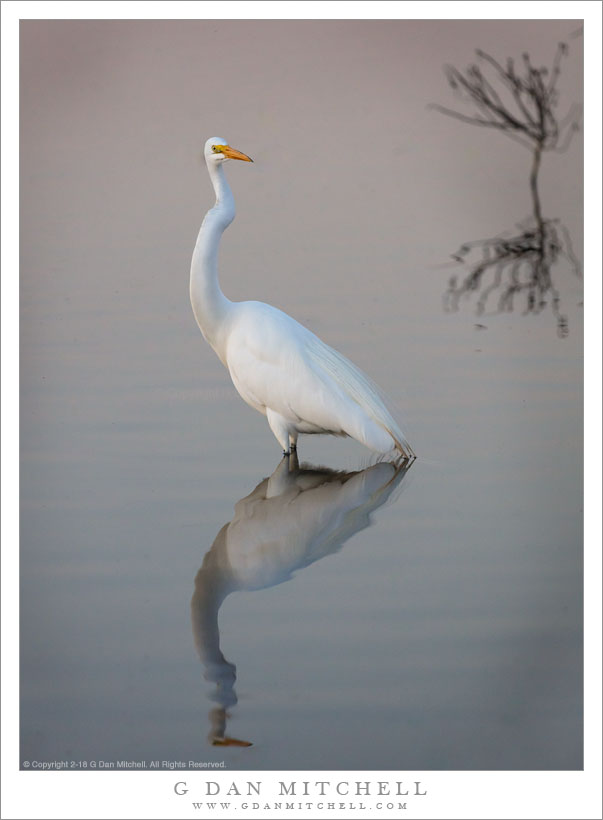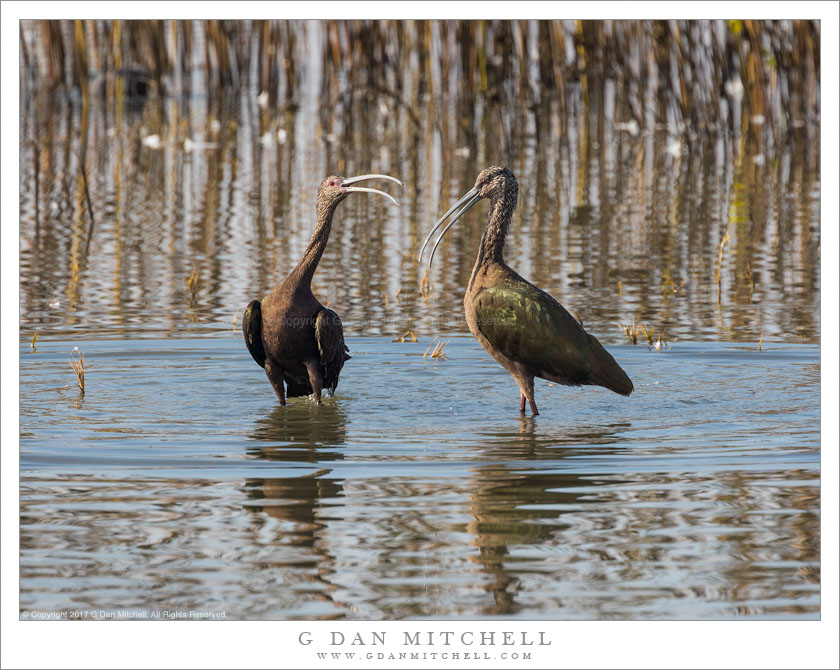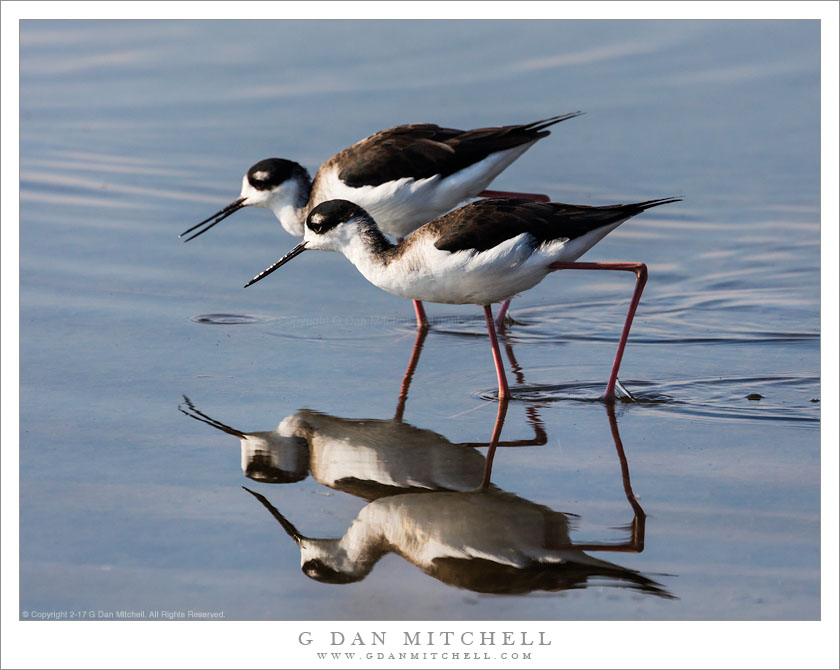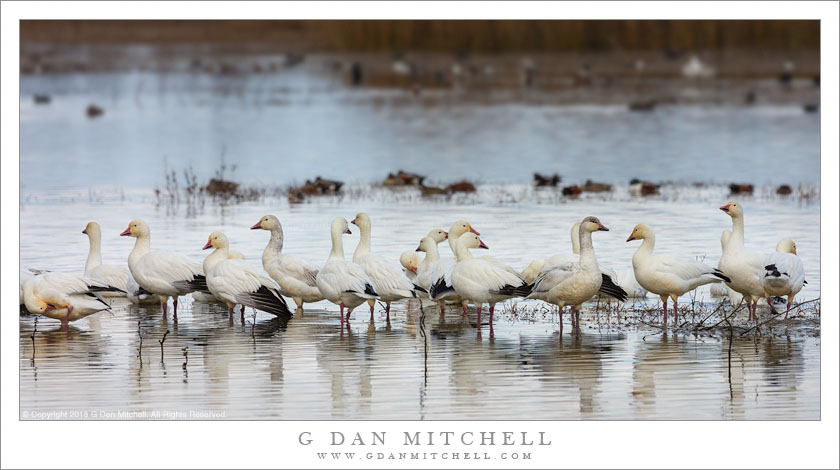
Great Egret, Reflection. © Copyright 2018 G Dan Mitchell – all rights reserved.
A great egret and its reflection in a wetland pond
While I don’t know the full extent of their (likely huge) range, these birds are ubiquitous in California. I remember when I first noticed them, many years ago when I was a dedicated cyclist. In those days I commuted to work by bicycle, covering between 30 and 55 miles a day, and portions of my ride always passed creeks and drainage canals. You might miss them speeding past in a car, but on a bicycle I frequently looked into these waterways and spotted these impressively large and nearly pure white birds. As time went on I found them all over the place — they can be found in many agricultural areas, for example, and I have photographed them feeding in kelp beds along the Pacific Ocean shoreline.
In flight they alternate between ungainliness and beauty. They can seem a bit gangly and awkward at times — their take-off can be somewhat awkward, for example. On the other hand they flare their wings beautifully upon landing. I don’t usually go out specifically to photograph the egrets, but sometimes it seems unavoidable since they turn up in so many places. They seem to have somewhat clearly defined boundaries when it comes to human presence. They more or less ignore us until we get too close (though this boundary changes depending upon whether they are feeding or not), but get a bit too close and you can see them “tighten up” and prepare for a sudden take-off, at which point you most often have only the opportunity to photograph them from the back as they depart. This bird had been hunting and seemed a bit more willing than most to let me photograph.
 G Dan Mitchell is a California photographer and visual opportunist. His book, “California’s Fall Color: A Photographer’s Guide to Autumn in the Sierra” is available from Heyday Books and Amazon.
G Dan Mitchell is a California photographer and visual opportunist. His book, “California’s Fall Color: A Photographer’s Guide to Autumn in the Sierra” is available from Heyday Books and Amazon.
Blog | About | Flickr | Twitter | Facebook | Google+ | LinkedIn | Email
All media © Copyright G Dan Mitchell and others as indicated. Any use requires advance permission from G Dan Mitchell.



